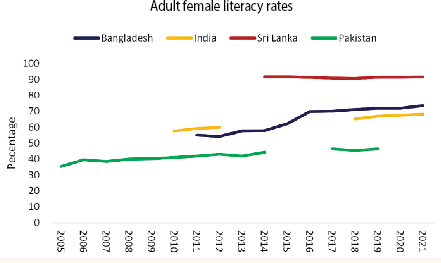THE Pakistan Council of Research in Water Resources (PCRWR) has identified increased levels of arsenic poisoning in all rivers of Pakistan.
Arsenic and its compounds are ubiquitous in nature. The trivalent and pentavalent forms are the most common. In oxygenated waters (e.g., Rohri and Phuleli Canals in Sindh), arsenic usually occurs as arsenate, but under reducing conditions, arsenites predominate.
High levels of arsenic (greater than 10 micrograms per litre) are naturally present in the groundwater of many countries. Globally, an estimated 150 million people are affected by arsenic-contaminated groundwaters. The International Agency for Research on Cancer has classified arsenic and arsenic compounds as carcinogenic to humans, including arsenic in drinking water.
Ingestion of arsenic (greater than 10 micrograms per litre), can cause skin lesions (hyperkeratosis), and skin cancer. Long-term exposure to arsenic can cause cancers of the bladder and lungs, developmental effects, neurotoxicity, diabetes, pulmonary disease and cardiovascular disease. Arsenic-induced myocardial infarction, in particular, can be a significant cause of excess mortality. In China, arsenic exposure has been linked to Blackfoot disease, which is a severe disease of blood vessels leading to gangrene.
Arsenic tends to concentrate in rice at higher levels than other crops, such as wheat
The US Environmental Protection Agency standard and the World Health Organisation (WHO)’s provisional guideline value of arsenic in drinking water is 10 ug/L - micrograms per litre (less than one-tenth of a drop of water in a 53-gallon tub).
The PCRWR report does not indicate the level of arsenic in surface water bodies. Most studies cover arsenic levels in groundwater in Pakistan, which ranges from 50 to 200 ug/L. Arsenic levels in surface waters average around 200 ug/L.
Arsenic uptake by plants
A significant source of arsenic is rice. Arsenic tends to concentrate in rice at higher levels than other crops, such as wheat. It is not known why there is higher arsenic uptake by rice.
An option to reduce arsenic exposure can be the restriction of rice consumption. However, because rice is such a major staple food in many countries restricting its consumption is not be possible.
Some international organisations took measures to regulate arsenic in rice. For example, the Codex Alimentarius Commission, an international body coordinated by WHO and the Food and Agriculture Organisation of the United Nations, in 2014, has proposed a maximum level of 0.2 mg/kg for inorganic arsenic in white rice.
Local Studies
A local paper investigated the presence of total arsenic, arsenite and arsenate in the irrigation water of Tando Muhammad Khan district, which was contaminated by different effluents and applied to rice fields. The researchers found that 3 out of 24 canal irrigation sites lying in the vicinity of Tando Muhammad Khan city were contaminated with a high level of arsenite (65 ug/L, average), while the remaining sites had a medium level of arsenite (16 ug/L, average). Total arsenic followed the same trend — high level in the same 3 sites (69 ug/L, average), medium level in the remaining 21 sites (17 ug/L, average).
Researchers also found that the cities of Hyderabad and Tando Muhammad Khan, an animal shelter, a cement factory, and the waste of textile and sugar industries were contributing arsenic to the sub-distributary canals of Phuleli Canal and Akram Wah. The level of various forms of arsenic was transported from irrigation canals to the rice fields.
Another paper found that the arsenic level in Manchar Lake was 97.5 ug/L (mean), while in surface waters in Jamshoro area, the arsenic level was more than 50 ug/L. The arsenic level in the agricultural soils of Sindh, fed by arsenic-rich irrigation waters, was 46.2 mg/kg (milligrams per kilogram).
The researchers found that, in the sediments of Manchar Lake, the total arsenic was in the range of 11.3-55.8 ug/L. The paper observed that Khairpur, Gambat, Kotdiji, Dadu, Sehwan, Johi, Sukkur, Nawabshah, Hyderabad, Karachi, and Thar area are highly affected by arsenic pollution.
Arsenic removal from irrigation waters
There are many arsenic removal technologies. These include oxidation, coagulation and filtration, coagulation with lime, activated alumina, granular ferric hydroxide, ion exchange, membrane techniques, and household filters (e.g., the Kanchan arsenic filter, developed by the Massachusetts Institute of Technology). These technologies are costly, and the sludge disposal is a major problem, as all arsenic concentrates in the sludge. Indiscriminate disposal of sludge may lead to significant environmental pollution.
These technologies are suitable for the removal of arsenic in drinking waters. They will not be suitable for agriculture as huge water volumes are involved. Rohri and Nara canals, in the Sukkur Barrage region, are large bodies of water. It will simply not be possible to treat waters of Rohri and Nara canals, assuming they have high levels of arsenic (greater than 10 micrograms per litre).
Developing crops that are resistant to arsenic contamination is a popular strategy, but would require considerable efforts on part of the Sindh Agriculture University, Tandojam, to determine which crops are arsenic-resistant. A low-cost option for arsenic reduction is phytoremediation.
Phytoremediation is a bioremediation process that uses various types of plants to remove, transfer, stabilise and destroy contaminants in the irrigation waters. The effectiveness of phytoremediation, a green technology, is determined by the identification of hyperaccumulators of arsenic (the ability of plants to phytoextraction of a variety of metals from water and soil).
Good irrigation practices (minimal water, intermediate amounts of water) and efficient irrigation technologies can be considered the best sustainable solution. For example, rice grown in an environment with minimal water irrigation results in the least amount of total arsenic in rice.
The writer has a master’s degree in environmental engineering from the Asian Institute of Technology, Bangkok
Published in Dawn, The Business and Finance Weekly, June 1st, 2020

































